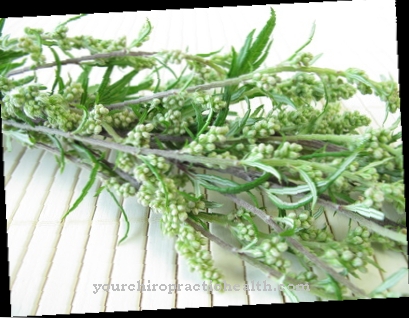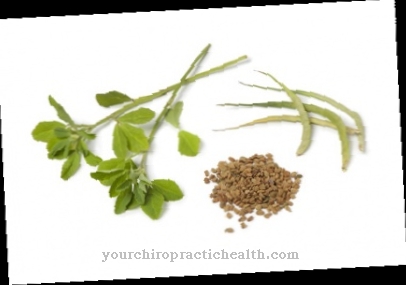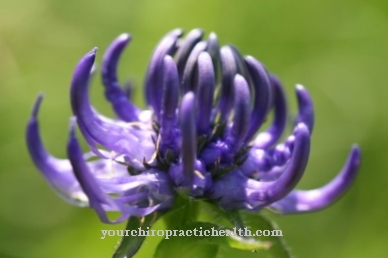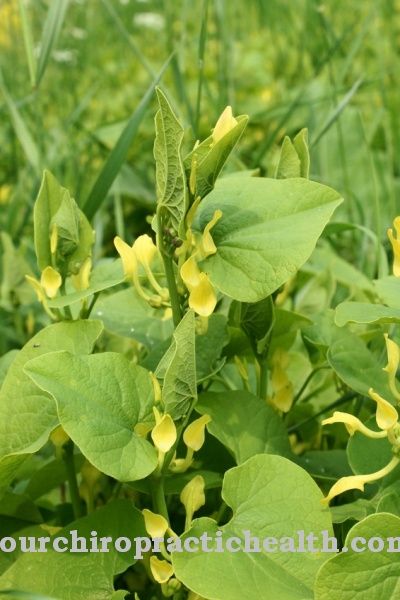As olive is the name of the fruit of the olive tree, which dates back to the 4th millennium BC. Was cultivated as a useful plant. On the one hand it is important in the economy, but on the other hand it is also used in the kitchen and medicine.
Occurrence & cultivation of the olive

Unripe olives are green in color, while ripe olives are black to brownish. Their water content is extremely high and they contain a large amount of fat. Raw olives are hardly edible because they are extremely bitter. They only become edible after repeated processing and immersion in water. 90 percent of the harvested olives are processed into olive oil, the rest are sold in processed and processed form in stores.
The natural occurrence of the olive is not limited to the Mediterranean area. The olive tree also grows naturally in South Africa and the Middle East. The tree can grow to be between ten and twenty meters high and survives for several centuries without severe pest infestation. The real olive tree is an evergreen plant that does not shed its leaves at any time of the year. With age, the bark of the tree becomes gnarled and gray-green in color.
Effect & application
The olive is used in different areas. It is particularly popular in the kitchen, which is also due to its long shelf life in pickled form.It is often used by cooks in Mediterranean cuisine, as is the olive oil pressed from the fruit. On the one hand it is of economic importance because the oil is traded worldwide and on the other hand it plays a role in cooking, frying and refining salads and cold dishes.
The fruits themselves are placed in brine during processing, which removes the bitterness from the olives. In the kitchen, for example, it is used in bread, but is also used in salads, sauces or ragouts. It is also often served as a side dish. In the shops you can find green and black, ripened olives, but also those colored with iron gluconate. The price difference between real black olives and the green or colored olives is considerable. Real black olives cost three times as much on average.
However, the olive tree can do even more. Its wood is often used to make furniture, musical instruments and various everyday objects. Apart from that, residues from oil production are also used as fuel. The cores are an alternative to wood pellets, which are also used in power plants. The largest olive producer in the world is Spain with a share of around 22 percent. Italy is just behind with around 18 percent. The marketing takes place, even with non-Italian oil, mainly in Italian companies. In the area of edible oil production, however, olive oil has a smaller share, as it is relatively expensive.
Importance for health, treatment & prevention
The olive is also used in medicine. Olive oil is particularly healthy because of its high number of unsaturated fatty acids and has a positive effect on lipid metabolism and the cardiovascular system. In addition, virgin olive oil is said to have anti-inflammatory properties. The active ingredient Oleocanthal is responsible for this. But olive leaves and extracts also have a health-promoting effect and are often used medicinally.
Already in the Middle Ages, digestive disorders were treated with tea made from olive leaves. The same tea was also used against malaria. In addition, in the 20th century, the leaves were examined for various active ingredients and their antihypertensive effect was found out. They also widen the blood vessels and improve the flow of blood. The leaves thus have a positive effect on the heart and circulatory system of the human body.
Cardiac arrhythmias and arteriosclerosis are now also treated with olive leaf extracts and various preparations. The extract appears to be a good alternative to antibiotics. It fights infections and improves the body's immune defenses. In contrast to antibiotics, olive extract has no significant risks or side effects that attack and deplete the body.
Another area of application is the use of olive leaves for skin tightening. The oleuropein it contains helps against weak connective tissue and reduces wrinkles. The olive thus also plays a crucial role in slowing down the aging process. Scaly and itchy skin can also be treated with olive oil or extracts. The health-promoting active ingredients are contained in up to three thousand times the concentration in the leaves, which gives them more medical interest than the fruit or oil.
To increase the feeling of well-being, olive extracts are also used in creams, face masks or ointments. They help against psoriasis and are used in shampoos and bath products. Added to this is the easy digestibility of black olives, which contain many vitamins and beta-carotene. The linoleic acid it contains also helps against gallstones and constipation.
























.jpg)



